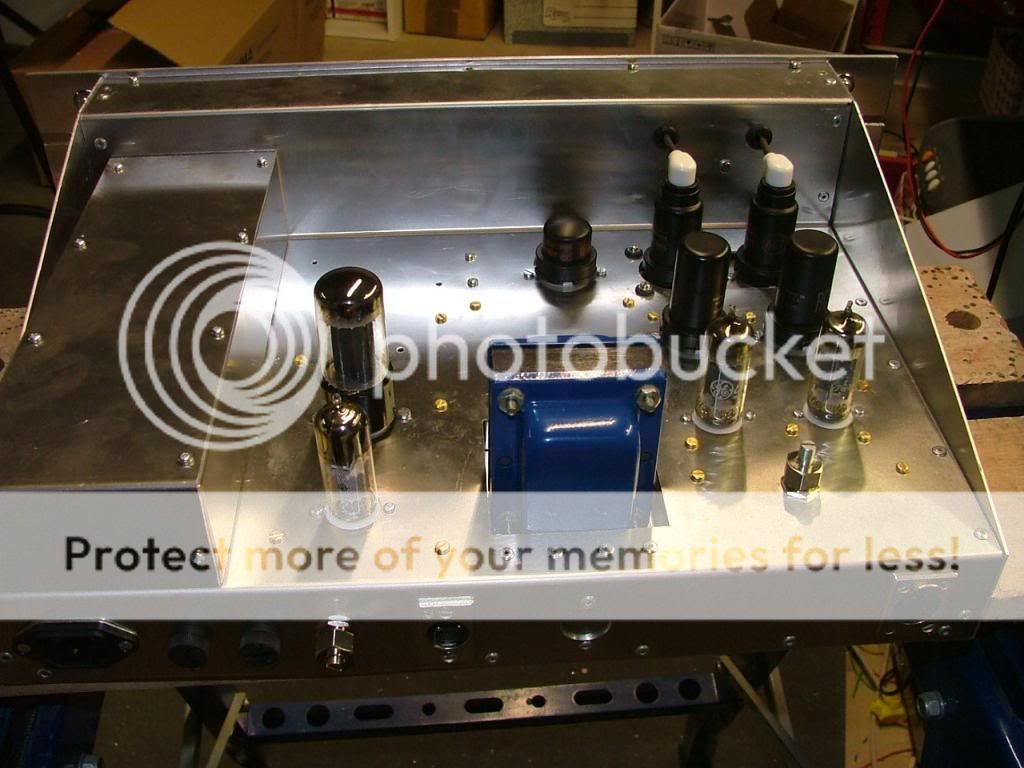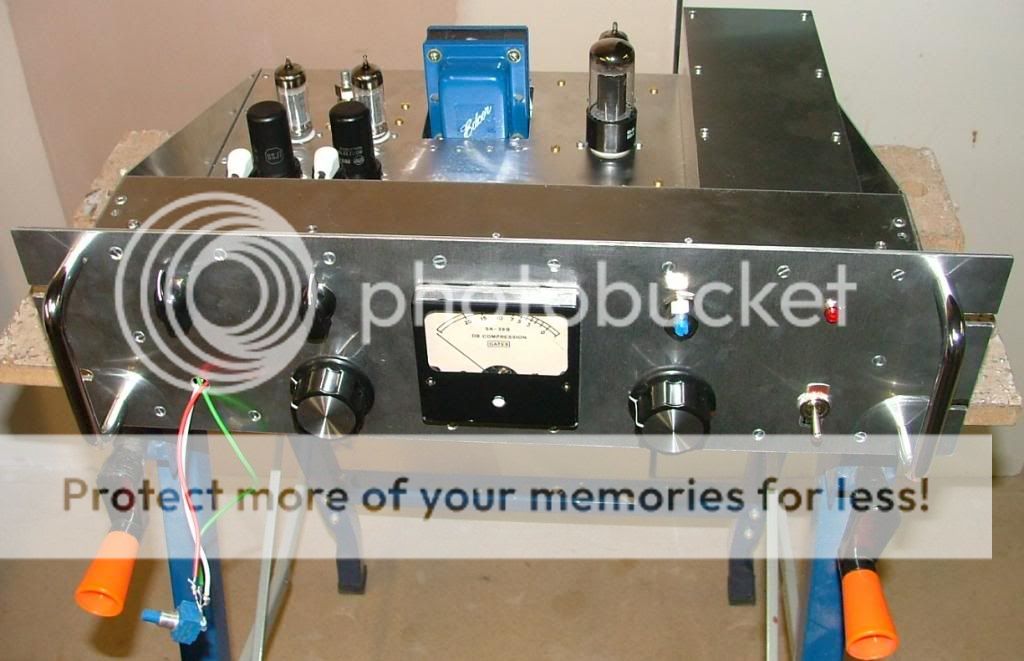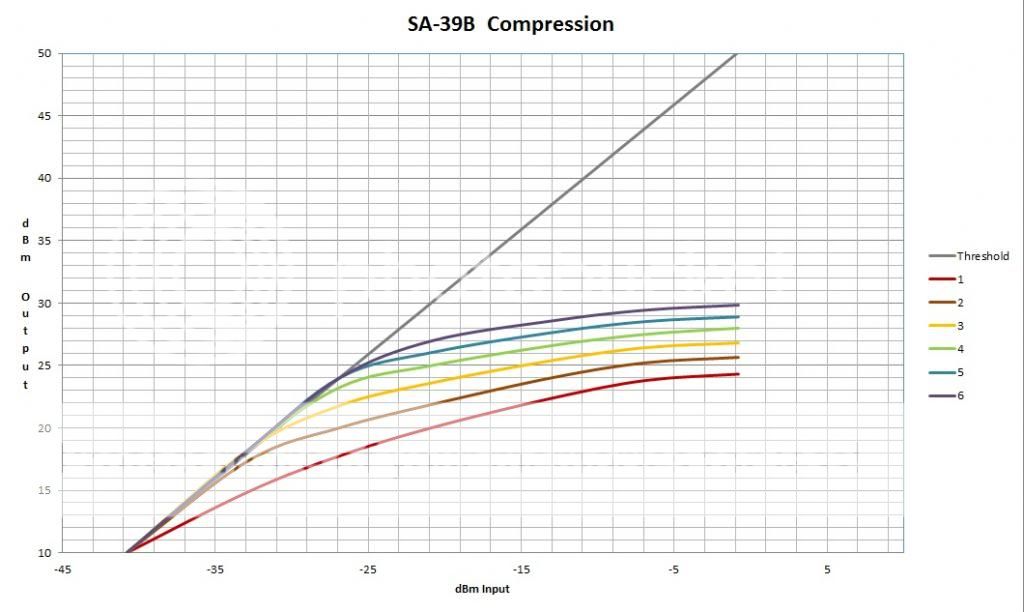Front Panel now complete and connected up, so far no unaccounted for wiring!
Here's it from the back with the grid caps fitted.

The front panel has a jury rig threshold control so that I can work out the comp ratios during testing, they will then be hard wired into a 6 way switch.

Tomorrow I start all the testing.
best
DaveP
Here's it from the back with the grid caps fitted.

The front panel has a jury rig threshold control so that I can work out the comp ratios during testing, they will then be hard wired into a 6 way switch.

Tomorrow I start all the testing.
best
DaveP


































